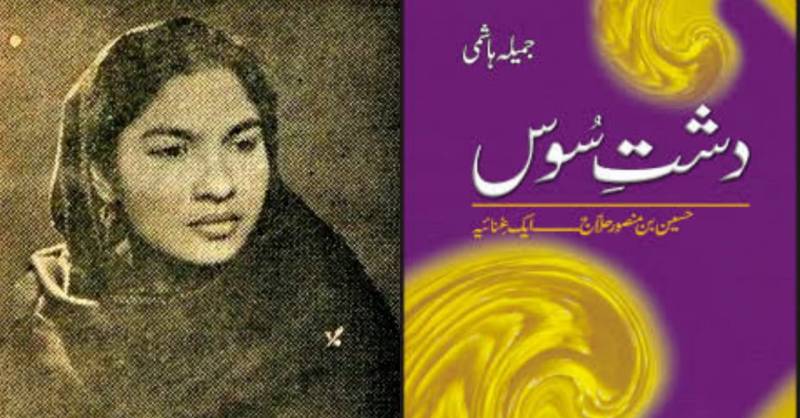
Jamila Hashmi was a renowned Urdu novelist and short story writer. Her novels Dasht-e-Soos, Chehra ba Chehra Roo-ba-Roo, Talash-e-Baharan speak about her idealistic approach in her fiction. The chief characters of her novels have a strong belief in idealism. It’s fiction that reveals the real impact of political pain on women. In every story, women are under attack and lose their identity. Some fight back, some surrender.
Jamila Hashmi was born in Amritsar in 1934 (Some say Lyallpur, Faisalabad in 1929) and after 1947 came to Lahore and settled in Sahiwal. She shifted to Lahore to complete her education and did her Masters in English Literature from FC College and then got married. She passed away in 1988.
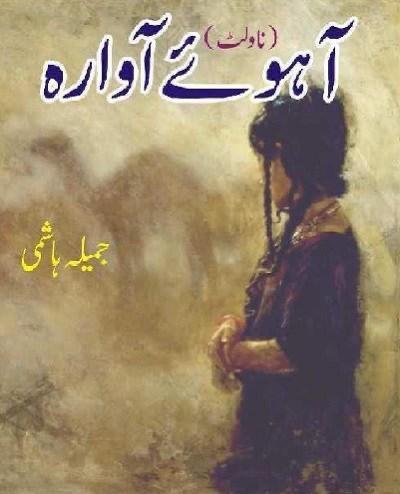
She was a novelist and a story writer of remarkable talent, depth, insight & cultural consciousness. Her most acclaimed novel Talash-e-Baharan was the recipient of the Adamjee Literary Award in Pakistan in 1960. Jamila Hashmi’s first novel was “Attish-e-Rufta”, which was serialised by Ishfaq Hussain. Other writings included “Talash-e-Baharan”, her collections of stories include ‘Rang Bhoom”, “Aap Bieti-Jug Bieti” and her trilogy of novels “Apna Apna Jahanum” and a novelette “Rohi”.
Her story “Banished” is an unusual tale of human angst. The story is narrated from the point of view of a woman. It is the story of an abducted Muslim girl caught between her happy childhood in the past which has been completely destroyed by the violence of partition. The author takes her bleak & painful present with no hope of redemption in the future as an image of permanently exiled Sita who remains with Ravan, her abductor, with no hope of Rama coming to rescue her.
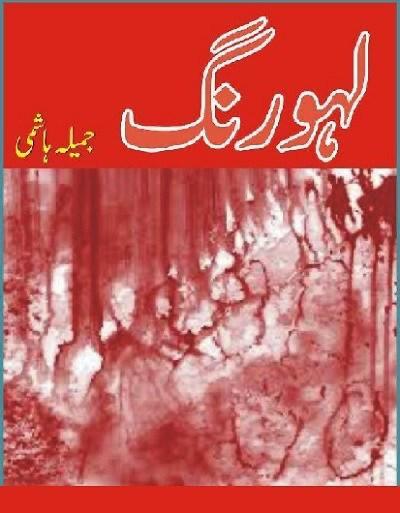
Banished is a story of Partition. This is the story of a woman who suffered during the partition. She has seen her Baaba’s beard grazing in blood, hands held up as if in prayer. She has seen all her family members being slaughtered while she was dragged out of the house by her hair.
Gurpal, now her husband, threw her in front of his mother and said
‘Look, MA, I’ve brought you a bahu. A real beauty! The best of the lot!’
And thus she was married. There were no tears because she didn’t have her brothers at her wedding.
"Well, maybe bhai and bhaiya weren’t present at my wedding - so what?
Hadn’t Gurpal rolled out a carpet of corpses for me?
Painted the roads red with blood?
Provided illumination by burning down city after city?
Didn’t people celebrate my wedding as they stampeded, screaming, and crying?"
Today is Diwali. This is celebrated as a day when Ram and Sita returned from exile. She compares herself with the life of Sita. It is quite the same except the Sita was finally rescued by her beloved whereas the narrator has accepted her life with Ravan.
The narrator is now married with three kids. She thinks of her life with her brothers before that gruesome day. She still wonders why she didn’t go with the policemen who came to rescue all the women who were forcefully taken by the mob of men.
Perhaps this Sita is now used to the life of exile. She has no hope left. Or perhaps this is her life actually. She has mended fences with her mother in law. She may not love her husband but she has three beautiful children who need her.
Rather than embrace a second exile, Sitaji has accepted the life with Ravan.
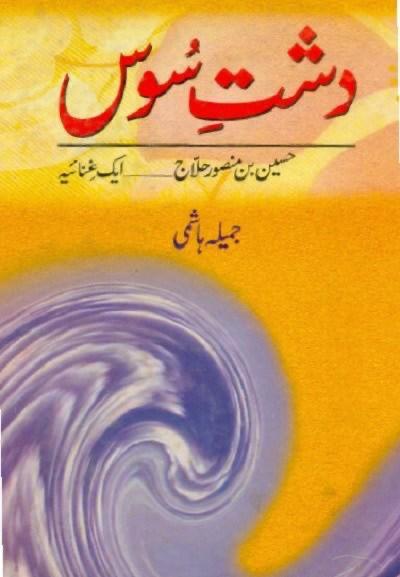
Dasht-e-Soos is another novel authored by the eminent writer Jamila Hashmi besides writing on a wide range of subjects and explored female subjectivity in intimate and unusual ways. The novel was first published in 1983.
Dasht-e-Soos is a bold recreation of the life and times of Hussain bin Mansur Hallaj, a daring figure in the history of Islamic mysticism publicly decapitated and crucified in the 10th century. Hallaj said ann-al Haq, that was not acceptable for the Ulama of that time. They declared it a Kufar and gave the Fatwa for his hanging. There is a controversial theory about the death of Hallaj. Some people gave him the title of a true Sufi, and someone called him a Murtad.
According to Jamila Hashmi’s daughter, Ayesha Siddiqa said in her essay titled the Reluctant Feminists:
“One would imagine that the main player of her novel she wrote in the mid-1980s on Mansoor Hallaj would be Hallaj. However, throughout the story, you cannot escape the overbearing aroma of Aghul Ghaimish, the woman that Hallaj only saw once and fell in love with. They never met but her desire was the flame that built inside him into a bigger fire and consumed him completely. It’s then that Aghul merges with God who then extends into Hallaj forcing him to utter “ann-al Haq” (I am the ultimate truth, I am God). This was an unexpected love story or at least with an unusual ending. I vividly remember one Lahori poet and friend of my mother’s asking her if the novel had any romance, to which she sheepishly replied in an affirmative. The gent eagerly borrowed the first copy of the press to return it quickly three days later. He was visibly disappointed to see it was not the kind of romance he expected nor was it the usual run of the mill novel. It has a very poetic and unusual diction that one doesn’t come across in Urdu fiction.
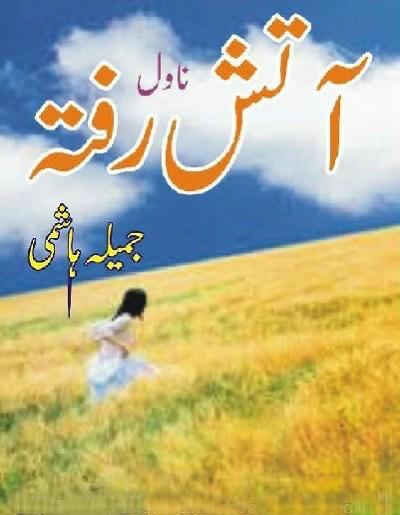
Others from the liberal left were equally agitated as had they expected a story that would bring out Hallaj – the messiah of the poor – as he was commonly imagined. But Jamila Hashmi had done a lot of historical and theoretical research to write about the Sufi saint’s inner journey. He may have been a messiah to the dispossessed or someone who challenged the status quo of religion in 9th century Baghdad. But Hashmi’s interest was in writing about the journey, which started with Aghul Ghaimish and ended with every bit of Hallaj’s body, as it was hung by the King’s decree and then chopped into pieces, screaming 'ann-al Haq'.
Jamila Hashmi was born in Amritsar in 1934 (Some say Lyallpur, Faisalabad in 1929) and after 1947 came to Lahore and settled in Sahiwal. She shifted to Lahore to complete her education and did her Masters in English Literature from FC College and then got married. She passed away in 1988.

She was a novelist and a story writer of remarkable talent, depth, insight & cultural consciousness. Her most acclaimed novel Talash-e-Baharan was the recipient of the Adamjee Literary Award in Pakistan in 1960. Jamila Hashmi’s first novel was “Attish-e-Rufta”, which was serialised by Ishfaq Hussain. Other writings included “Talash-e-Baharan”, her collections of stories include ‘Rang Bhoom”, “Aap Bieti-Jug Bieti” and her trilogy of novels “Apna Apna Jahanum” and a novelette “Rohi”.
Her story “Banished” is an unusual tale of human angst. The story is narrated from the point of view of a woman. It is the story of an abducted Muslim girl caught between her happy childhood in the past which has been completely destroyed by the violence of partition. The author takes her bleak & painful present with no hope of redemption in the future as an image of permanently exiled Sita who remains with Ravan, her abductor, with no hope of Rama coming to rescue her.

Banished is a story of Partition. This is the story of a woman who suffered during the partition. She has seen her Baaba’s beard grazing in blood, hands held up as if in prayer. She has seen all her family members being slaughtered while she was dragged out of the house by her hair.
Gurpal, now her husband, threw her in front of his mother and said
‘Look, MA, I’ve brought you a bahu. A real beauty! The best of the lot!’
And thus she was married. There were no tears because she didn’t have her brothers at her wedding.
"Well, maybe bhai and bhaiya weren’t present at my wedding - so what?
Hadn’t Gurpal rolled out a carpet of corpses for me?
Painted the roads red with blood?
Provided illumination by burning down city after city?
Didn’t people celebrate my wedding as they stampeded, screaming, and crying?"
Today is Diwali. This is celebrated as a day when Ram and Sita returned from exile. She compares herself with the life of Sita. It is quite the same except the Sita was finally rescued by her beloved whereas the narrator has accepted her life with Ravan.
The narrator is now married with three kids. She thinks of her life with her brothers before that gruesome day. She still wonders why she didn’t go with the policemen who came to rescue all the women who were forcefully taken by the mob of men.
Perhaps this Sita is now used to the life of exile. She has no hope left. Or perhaps this is her life actually. She has mended fences with her mother in law. She may not love her husband but she has three beautiful children who need her.
Rather than embrace a second exile, Sitaji has accepted the life with Ravan.

Dasht-e-Soos is another novel authored by the eminent writer Jamila Hashmi besides writing on a wide range of subjects and explored female subjectivity in intimate and unusual ways. The novel was first published in 1983.
Dasht-e-Soos is a bold recreation of the life and times of Hussain bin Mansur Hallaj, a daring figure in the history of Islamic mysticism publicly decapitated and crucified in the 10th century. Hallaj said ann-al Haq, that was not acceptable for the Ulama of that time. They declared it a Kufar and gave the Fatwa for his hanging. There is a controversial theory about the death of Hallaj. Some people gave him the title of a true Sufi, and someone called him a Murtad.
According to Jamila Hashmi’s daughter, Ayesha Siddiqa said in her essay titled the Reluctant Feminists:
“One would imagine that the main player of her novel she wrote in the mid-1980s on Mansoor Hallaj would be Hallaj. However, throughout the story, you cannot escape the overbearing aroma of Aghul Ghaimish, the woman that Hallaj only saw once and fell in love with. They never met but her desire was the flame that built inside him into a bigger fire and consumed him completely. It’s then that Aghul merges with God who then extends into Hallaj forcing him to utter “ann-al Haq” (I am the ultimate truth, I am God). This was an unexpected love story or at least with an unusual ending. I vividly remember one Lahori poet and friend of my mother’s asking her if the novel had any romance, to which she sheepishly replied in an affirmative. The gent eagerly borrowed the first copy of the press to return it quickly three days later. He was visibly disappointed to see it was not the kind of romance he expected nor was it the usual run of the mill novel. It has a very poetic and unusual diction that one doesn’t come across in Urdu fiction.

Others from the liberal left were equally agitated as had they expected a story that would bring out Hallaj – the messiah of the poor – as he was commonly imagined. But Jamila Hashmi had done a lot of historical and theoretical research to write about the Sufi saint’s inner journey. He may have been a messiah to the dispossessed or someone who challenged the status quo of religion in 9th century Baghdad. But Hashmi’s interest was in writing about the journey, which started with Aghul Ghaimish and ended with every bit of Hallaj’s body, as it was hung by the King’s decree and then chopped into pieces, screaming 'ann-al Haq'.
